The 5 Greatest Flavors of Greenland – where “great” doesn’t always mean “good”, but definitely spells “unique” – Cerca Travel‘s list of five culturally important foods of this impressive Arctic island.
Check out Cerca’s Passport episode about the gods and monsters of Greenlandic legend.
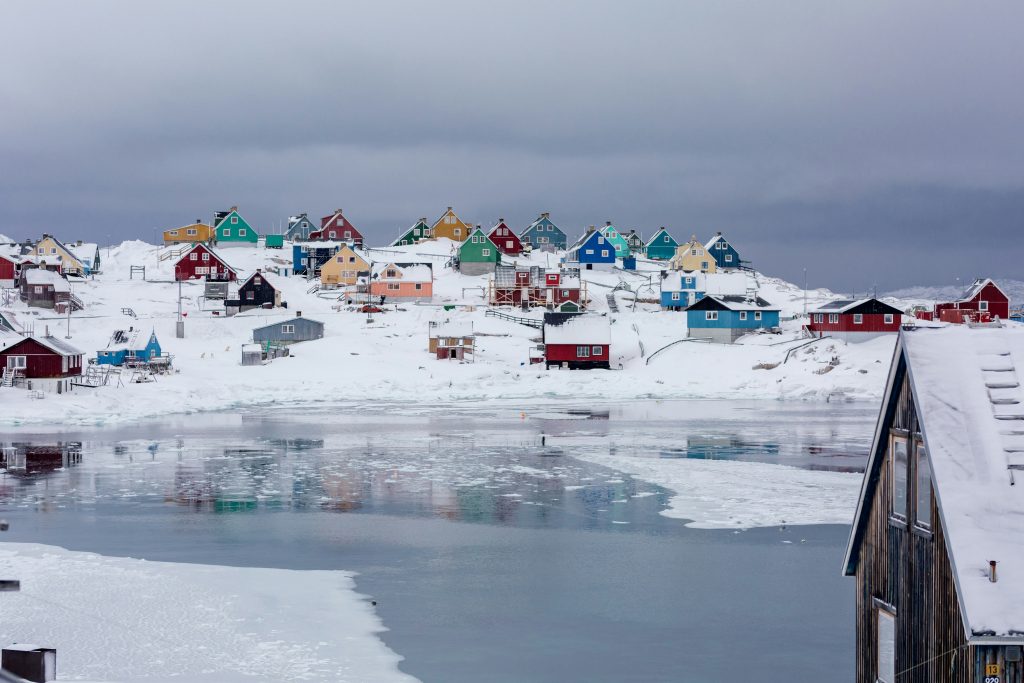
The Land of the People
Greenland, a vast land of ice and fjords, isn’t the first place that comes to mind for foodies, and it probably shouldn’t, but a requisite for getting to know this place is a sense of adventure, meals included.
The world’s largest island, has a history as vast and rugged as its icy landscapes. Though often associated with Viking explorers, its true story begins thousands of years earlier. The first known settlers of Greenland arrived around 2500 BCE. These early Arctic cultures, known as the Saqqaq and later the Dorset people, were part of a wave of migrations from Siberia and Canada. They thrived by hunting seals, whales, and caribou, developing tools and techniques uniquely suited for the harsh Arctic climate.
Around 1200 the Thule people, ancestors of today’s Greenlandic Inuit, arrived from Alaska. Their advanced technology—such as dog sleds and kayaks—allowed them to become the dominant culture, and they remain the heart of Greenland’s population today.
In the late 10th century, Norse explorers led by Erik the Red—exiled from Iceland for murder—sailed west and founded settlements on the island. He named the land Grœnland (“Green Land”) as a marketing strategy to attract settlers. The Norse established farming communities in the south, building churches and trading with Europe.
However, by the 15th century, these Norse settlements mysteriously disappeared, likely due to a combination of climate change (the onset of the Little Ice Age), isolation, and conflicts with the Inuit. In 1721, Danish-Norwegian missionary Hans Egede arrived, re-establishing European presence in Greenland under Denmark’s control. Over time, the island became a colony, and the Inuit were introduced to Christianity, European trade, and new technologies.
Greenland remained under Danish rule and was officially incorporated into Denmark in 1953, shifting from a colony to a province. That brings us to today, where the province, which was granted “home rule” by the Danes, has become a target of the Imperialist-leanings of Donald Trump – due to the Island’s strategic location in the Arctic.
The foods on our list were picked for their important cultural significance to the Inuit peoples of Greenland, and we advise being culturally sensitive to the practices and traditions of these people while sharing in their culinary heritage.
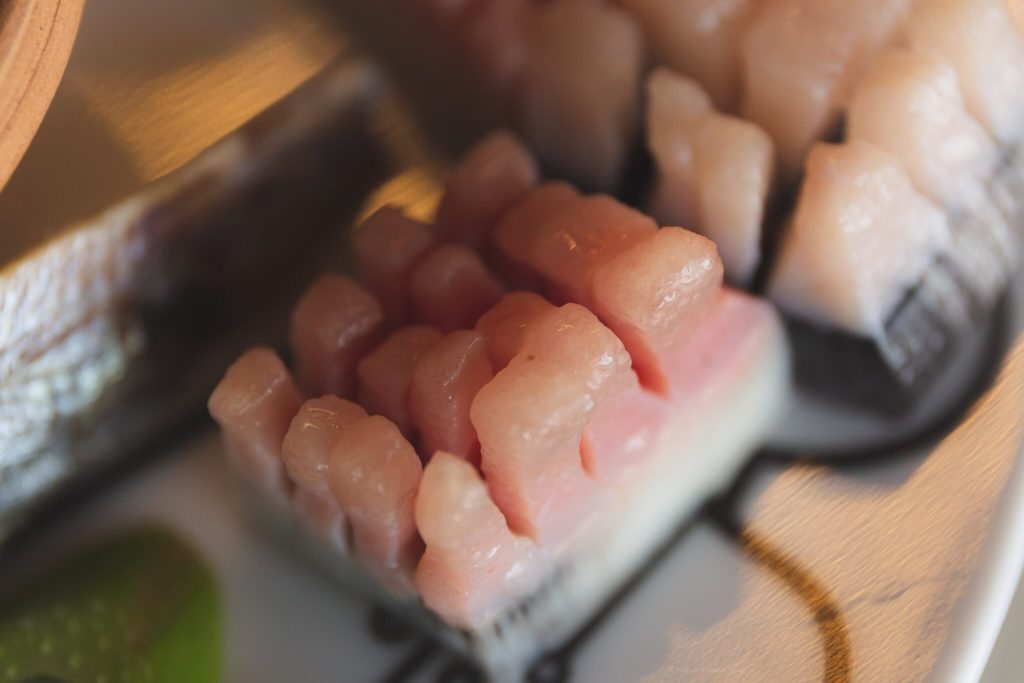
1. Mattak: The Ultimate Inuit Superfood
Mattak—whale skin with a thin layer of fat—is the epitome of traditional Greenlandic cuisine. For centuries, the Inuit have relied on marine mammals for survival, using every part of the animal in a sustainable way. Mattak, often from narwhal or beluga, is high in Omega-3s and vitamin C, making it a crucial food source in the Arctic diet.
Where to Try Mattak
Mattak is best enjoyed fresh, sliced into bite-sized cubes. It has a chewy, almost coconut-like texture and is traditionally eaten raw. You can try it at:
Inuk Hostels (Nuuk) – A café that offers authentic Greenlandic dishes, including occasionally mattak when available – call ahead to check.
Brugseni (Nuuk) – Greenland’s largest supermarket chain, mattak is often carried here. Brugseni has committed to carrying as many local and sustainable products as possible – so it’s a responsible choice for sourcing great local ingredients.
Kalaaliaraq (Nuuk)- Visit this local fish market and get mattak straight from the fishermen.
Sustainable Practice: Greenlanders practice a subsistence lifestyle, ensuring that every part of the whale is used. When eating mattak, do so with respect for this tradition. Avoid imported whale products and opt for locally sourced, traditionally harvested options.
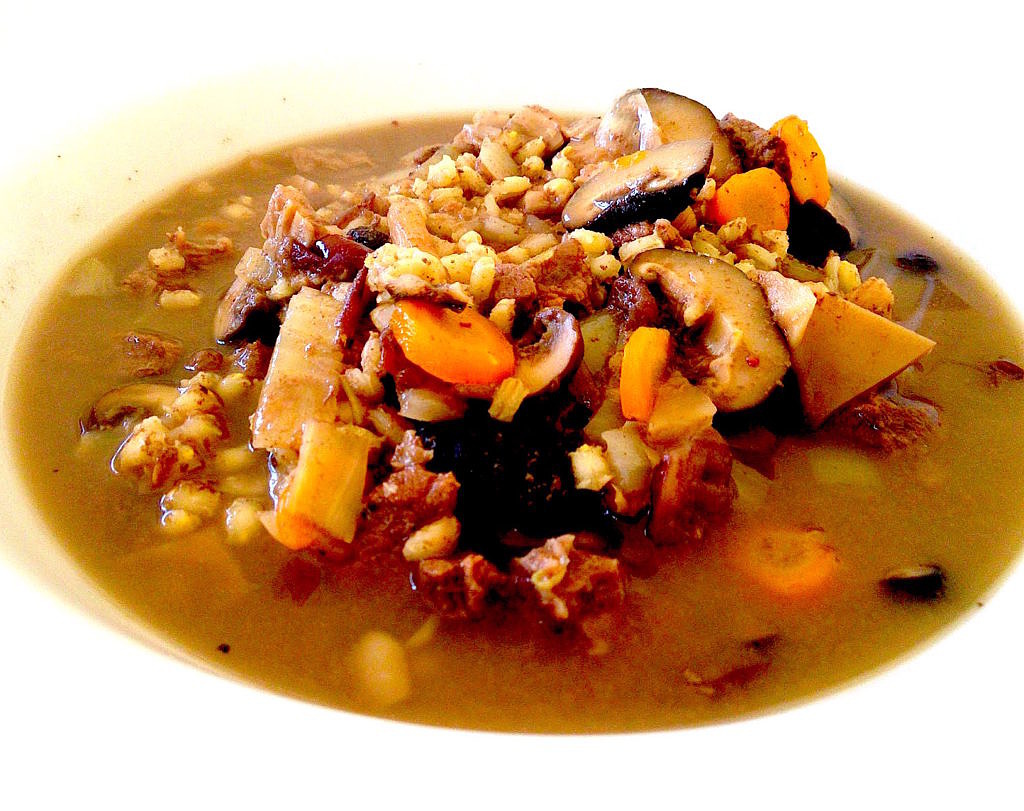
2. Suaasat: The Soul of Greenlandic Comfort Food
Suaasat, Greenland’s national dish, is a hearty soup made from traditionally from seal, onions and barley. Today it can contain seal, reindeer, or seabirds, or other local meat, flavored with bay leaves, onions, and rice or barley. Historically, it was a dish of survival, crafted from whatever the hunter brought home. Today, it remains a staple in local homes.
Where to Try:
Hotel Sisimiut (Sisimiut) – During the summer months the hotel stocks a traditional Greenlandic buffet, with everything on our list, including the aforementioned mattak, Suaasat, and a variety of reindeer and muskox dishes.
Sustainable Tip: Look for restaurants that source their meat locally and avoid imported or factory-farmed ingredients. The best suaasat is made from traditionally hunted meat. The Hotel Sisimiut marks their menu with indications of locally harvested and hunted ingredients.
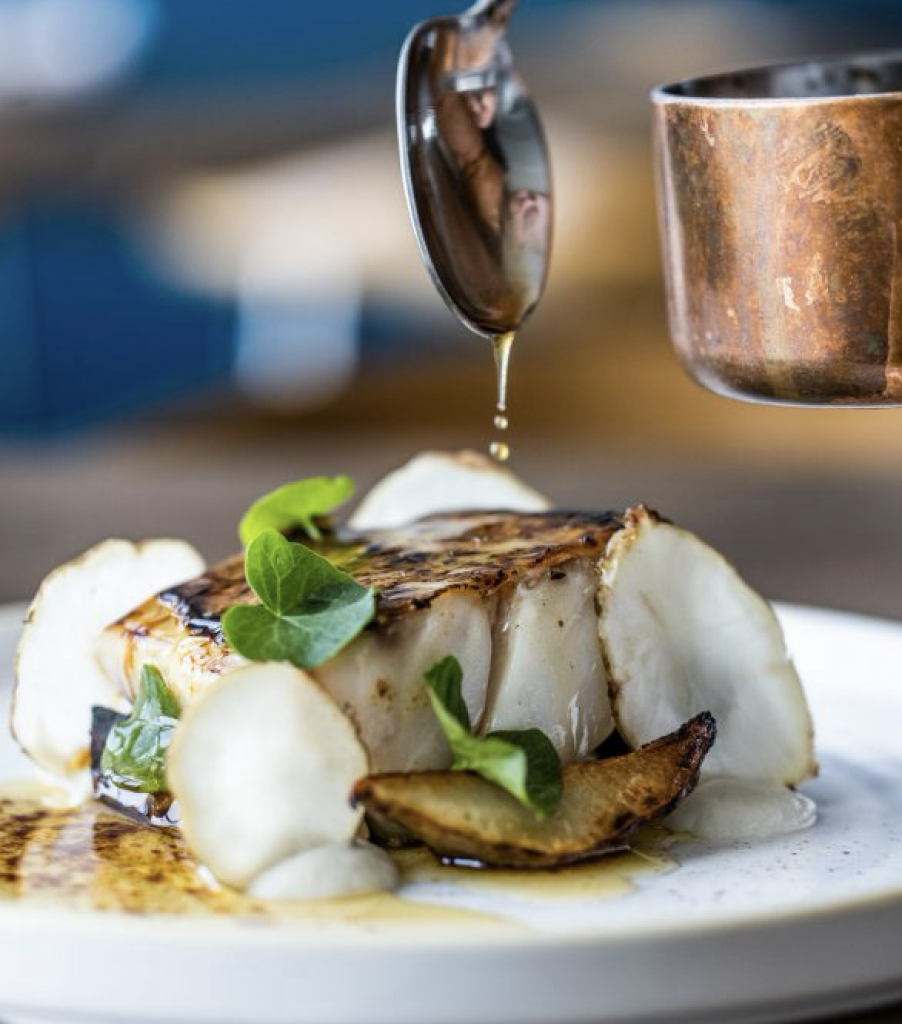
3. Greenlandic Halibut
Greenland’s cold waters produce some of the world’s best fish—Arctic char, halibut, and cod are staples of the diet. Fishing has been a way of life here for over a thousand years, with sustainable line-fishing methods still in practice today.
Unlike Atlantic and Pacific halibut, which prefer slightly warmer coastal waters, Greenlandic halibut thrives in sub-zero temperatures, making its texture and fat content unique. Particularly in the cities of Nuuk and Ilulissat, you can find halibut showcased in raw in sushi.
Where to Try:
Hotel Hvide Falk (Disko Bay) – Serves up fresh catch, and also has a Greenlandic Buffet that operates from February to September – check the dates on the website, it’s only available on certain days.
Hotel Icefiord (Ilulissat)– This sustainable-first, high-end restaurant serves only local fish and game – Greenlandic reindeer and musk ox from Kangerlussuaq, and native produce like crowberries, Angelica, and local mushrooms.
SØMA (Nuuk) – There’s a whole roasted halibut on the menu. Yum.
Hands-On Experience: Book a fishing excursion in Qaqortoq where you can catch your own dinner, the guides will help you clean and prep it.
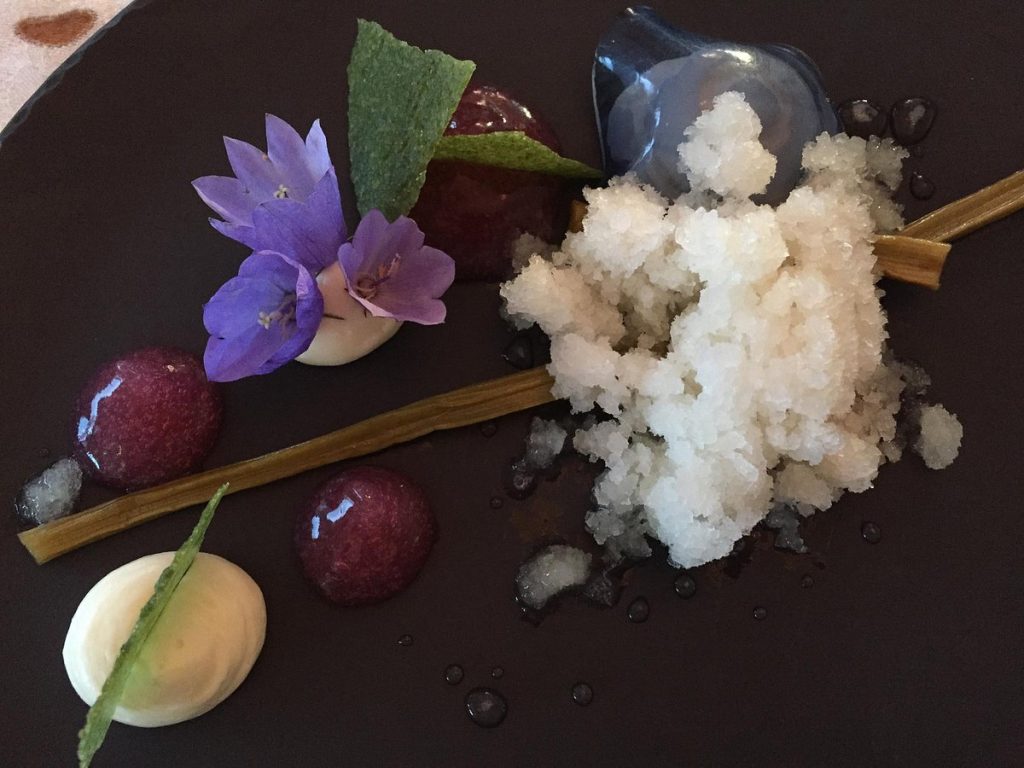
4. Greenlandic Berries
Despite its icy terrain, Greenland bursts into color in summer with wild berries—crowberries, blueberries, and Arctic cranberries. Indigenous people have used these berries for generations, both as food and medicine.
Where to Try Greenlandic Berries
Restaurant Ulo (Ilulissat) – Offers a beautiful tasting menu that leans heavily on local Greenlandic ingredients like wild berries, in wild gooseberry ice cream, for example.
H8 Explorer (Oqaatsut) – The restaurant is situated on the water’s edge and housed in historic buildings dating from the late 1800s.
Hands-On Experience: Foraging for berries. Nomad Greenland offers tours for foraging from August-September around Saqqaq.
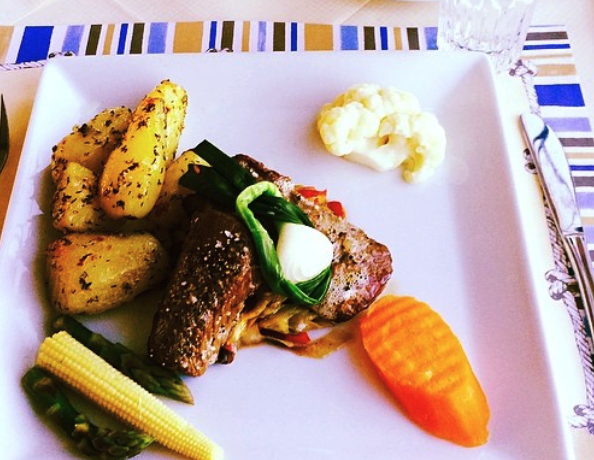
5. Greenlandic Lamb
South Greenland is home to one of the world’s most northern sheep farms, producing tender, grass-fed lamb. Sheep farming was introduced by Norse settlers over 1,000 years ago and has since become a vital industry. The lamb is prized for it’s flavor, which is attributed to the fact that it grows slowly due to cold weather.
The only other traditional livestock on the island is Muskox and Reindeer – nearly everything else roams wild in over the rocky terrain. You’ll find Muskox Tar-tar and Reindeer burgers on menus throughout the country.
Where to Try Greenlandic Lamb
Restaurant Roklubben (Kangerlussuaq) – This fine dining restaurant on the shores of Lake Ferguson also serves a Greenlandic buffet on Wednesday and Sunday.
Hands-On Experience: Visit Upernaviarsuk Agricultural Station, where you can learn about sustainable and Inuit farming at the edge of the polar ice.
Bonus: Greenlandic Coffee
An after-dinner tradition – prepared table-side or at the bar, the prep here is part of the show – hot coffee, added to a glass of Kahlúa and Whiskey, topped with whipped cream, and then Grand Marnier that is set alight (said to represent the glorious northern lights).
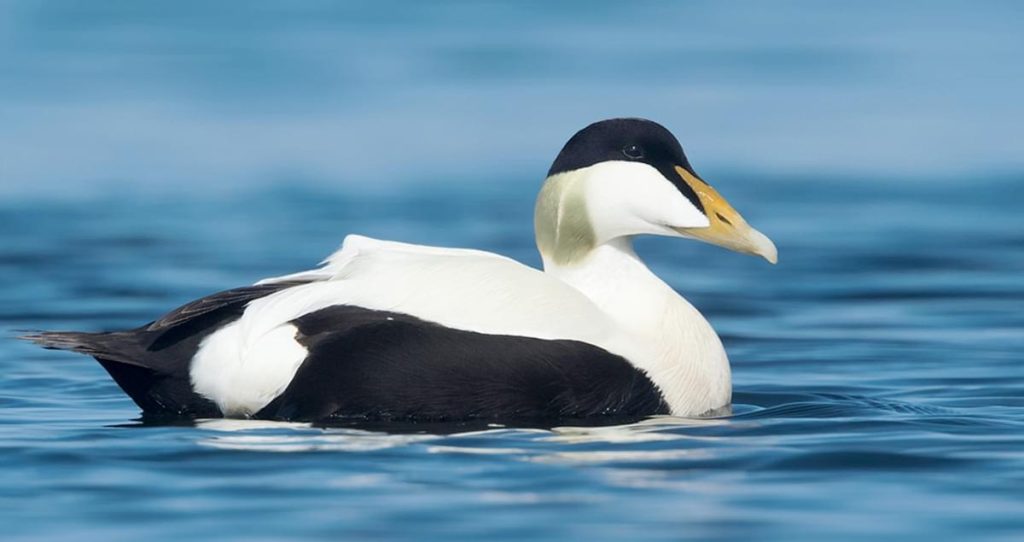
Looking for more to try? Keep an eye out for these delicious seabirds local to Greenland and found on seasonal menus:
Little Auk – Known as Appaliarsuk in Greenlandic, the little auk is one of the most abundant seabirds, nesting in vast colonies along cliffs. Traditionally, Greenlanders have caught these birds using nets, particularly in the summer months when they are easiest to trap. The birds are often stored in sealskin bags to ferment—a process that has been used for centuries to preserve food in the Arctic. The resulting dish, known as kiviaq, is a delicacy with a strong, tangy flavor, often served at special gatherings.
Common Eider – The eider is a large Arctic duck prized for both its meat and down feathers, which are used to make some of the world’s warmest clothing. Eider ducks are commonly hunted in winter and are often prepared by roasting or boiling in stews. A popular Greenlandic dish features eider duck slow-cooked with berries, sea salt, and reindeer fat, showcasing the resourcefulness of Arctic cooking.
Northern Fulmar – Fulmars, which resemble seagulls but have a distinct musky aroma due to their diet, are hunted primarily in remote coastal villages. Traditionally, fulmars are preserved through drying or smoking, making them a staple in Greenlandic food stores. Some hunters also render their fat for use in cooking, much like how seal blubber has been used in the past.
Greenland’s cuisine is more purely reflective of the natural environment than most places we’ve explored, and the locals are very conscious to keep it that way. There is significant attention paid to sustainable farming, fishing and hunting practices, and a celebration of creative and adaptive cooking that we simply love. Get out there and taste the flavors of the Arctic – we can’t wait to hear what you think!